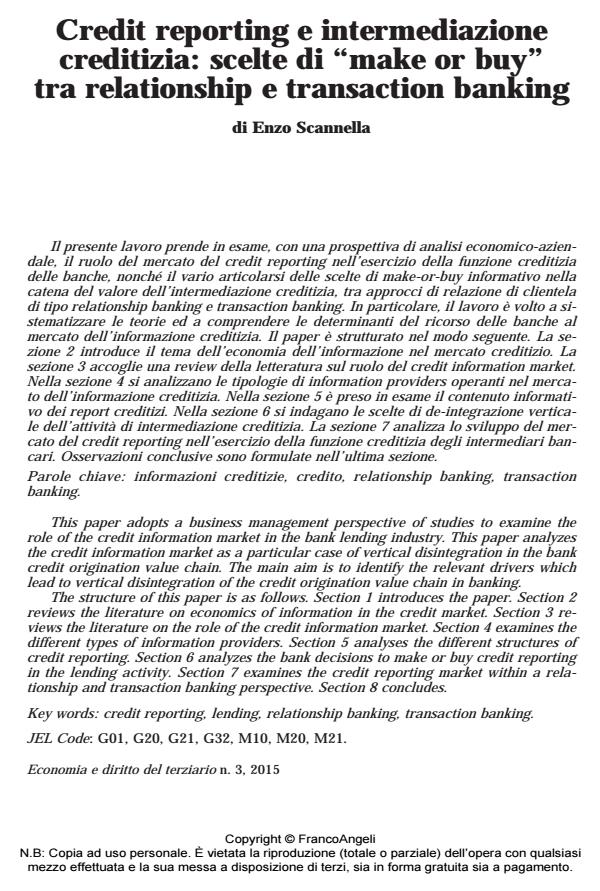Credit reporting e intermediazione creditizia: scelte di "make or buy" tra relationship e transaction banking
Titolo Rivista ECONOMIA E DIRITTO DEL TERZIARIO
Autori/Curatori Enzo Scannella
Anno di pubblicazione 2016 Fascicolo 2015/3
Lingua Italiano Numero pagine 30 P. 401-430 Dimensione file 481 KB
DOI 10.3280/ED2015-003002
Il DOI è il codice a barre della proprietà intellettuale: per saperne di più
clicca qui
Qui sotto puoi vedere in anteprima la prima pagina di questo articolo.
Se questo articolo ti interessa, lo puoi acquistare (e scaricare in formato pdf) seguendo le facili indicazioni per acquistare il download credit. Acquista Download Credits per scaricare questo Articolo in formato PDF

FrancoAngeli è membro della Publishers International Linking Association, Inc (PILA)associazione indipendente e non profit per facilitare (attraverso i servizi tecnologici implementati da CrossRef.org) l’accesso degli studiosi ai contenuti digitali nelle pubblicazioni professionali e scientifiche
Il presente lavoro prende in esame, con una prospettiva di analisi economico-aziendale, il ruolo del mercato del credit reporting nell’esercizio della funzione creditizia delle banche, nonché il vario articolarsi delle scelte di make-or-buy informativo nella catena del valore dell’intermediazione creditizia, tra approcci di relazione di clientela di tipo relationship banking e transaction banking. In particolare, il lavoro è volto a sistematizzare le teorie ed a comprendere le determinanti del ricorso delle banche al mercato dell’informazione creditizia. Il paper è strutturato nel modo seguente. La sezione 2 introduce il tema dell’economia dell’informazione nel mercato creditizio. La sezione 3 accoglie una review della letteratura sul ruolo del credit information market. Nella sezione 4 si analizzano le tipologie di information providers operanti nel mercato dell’informazione creditizia. Nella sezione 5 è preso in esame il contenuto informativo dei report creditizi. Nella sezione 6 si indagano le scelte di de-integrazione verticale dell’attività di intermediazione creditizia. La sezione 7 analizza lo sviluppo del mercato del credit reporting nell’esercizio della funzione creditizia degli intermediari bancari. Osservazioni conclusive sono formulate nell’ultima sezione.
Parole chiave:Informazioni creditizie, credito, relationship banking, transaction banking
Jel codes:G01, G20, G21, G32, M10, M20, M21
Enzo Scannella, Credit reporting e intermediazione creditizia: scelte di "make or buy" tra relationship e transaction banking in "ECONOMIA E DIRITTO DEL TERZIARIO " 3/2015, pp 401-430, DOI: 10.3280/ED2015-003002